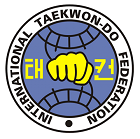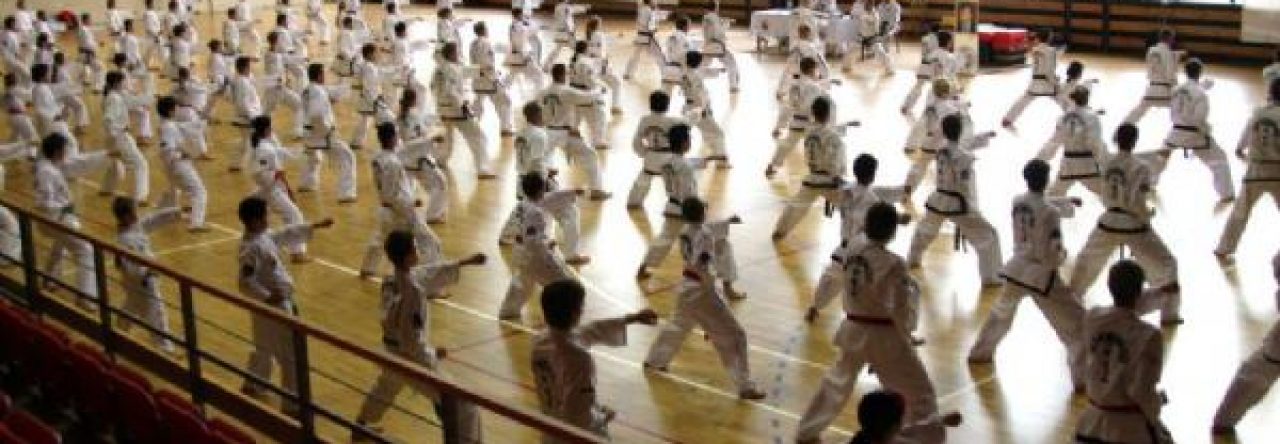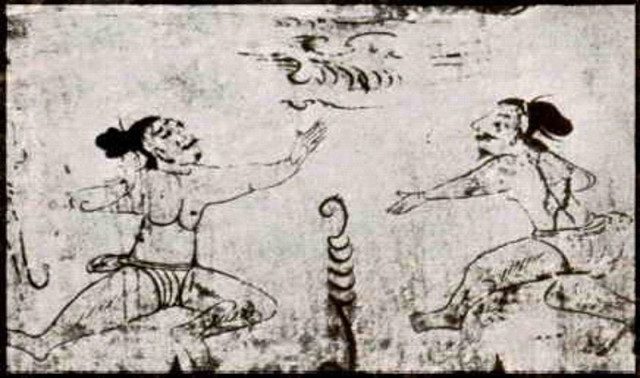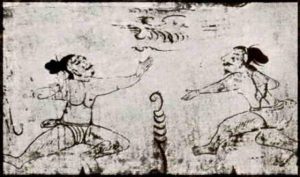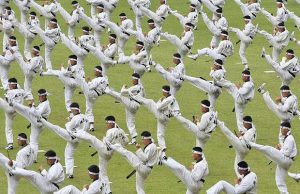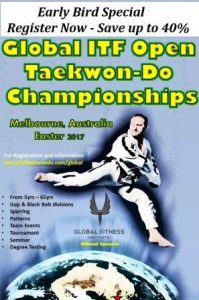Korean Martial Arts – a brief history
The history of Korean martial arts, often referred to as “Muye” or “Muyedobotongji,” is rich and diverse, with a lineage that dates back thousands of years. They have been influenced by various factors, including indigenous Korean fighting systems, Chinese martial arts, Japanese martial arts, and more.
Here’s an overview of the history of Korean martial arts:
- Ancient Korea:
- Korea has a long history of indigenous martial arts, some of which were documented in ancient texts such as the “Samguk Sagi” and “Samguk Yusa.” These texts mention the use of martial arts in battles and competitions as far back as the Three Kingdoms period (57 BC – 668 AD).
- Influence from China:
- During the Three Kingdoms period, Korean warriors were exposed to Chinese martial arts techniques through cultural exchanges and conflicts with Chinese forces.
- Silla Dynasty:
- Goryeo Dynasty:
- The Goryeo Dynasty (918-1392) saw further development of Korean martial arts. The “Muyejebo,” an illustrated manual, documented various martial techniques, weapons, and training methods during this period.
- Joseon Dynasty:
- The Joseon Dynasty (1392-1910) contributed significantly to the codification and organization of martial arts. The “Muyejebo Beonyeok” (1599) and “Muyedobotongji” (1790) are important texts that outlined the various martial techniques of the time.
- Japanese Occupation:
- During the Japanese occupation of Korea (1910-1945), many aspects of Korean culture, including martial arts, were suppressed. Some Korean martial arts masters continued to practice in secret.
- Post-World War II:
- After World War II and the liberation of Korea from Japanese rule, martial arts experienced a revival. Various martial arts schools and organizations were established. Taekwondo, a Korean martial art known for its high kicks and dynamic movements, was officially recognized in 1955.
- International Recognition:
- The International Taekwon-Do Federation was formed by General Choi Hong Hi, regarded as the Founder of Taekwon-Do, in March 1966.
- The World Taekwondo Federation was formed in March 1973.
- Taekwondo gained international recognition and was adopted as an official Olympic sport in 2000. It has since become one of the most widely practiced martial arts worldwide.
- Other Korean Martial Arts:
- Besides Taekwondo, there are many other Korean martial arts with distinct styles and techniques. Some of these include Hapkido, Tang Soo Do, Kuk Sool Won, and more.
- Modern Developments:
- In recent years, there has been a resurgence of interest in traditional Korean martial arts and their historical roots. Efforts to preserve and promote these arts continue.
Korean martial arts are diverse, encompassing striking techniques, grappling, self-defense, and traditional weapon forms. They emphasize not only physical prowess but also mental discipline and moral values.
Their history reflects the nation’s cultural heritage and its enduring commitment to preserving these ancient traditions.
What are some of the characteristics of the different martial arts of Korea ?
- Taekwondo:
- Kicks: Taekwondo is renowned for its high, fast, and powerful kicks, including the roundhouse/turning kick, sidekick, and axe/downward kick.
- Emphasis on speed and agility: Taekwondo practitioners focus on quick and precise movements.
- Forms or Patterns (Poomsae / Tul): Practitioners learn a series of choreographed movements to develop technique and discipline.
- Competitive Sparring: Taekwondo features Olympic-style sparring (WT), with points awarded for controlled and accurate kicks or Traditional type sparring (ITF) which also features more emphasis on hand techniques as well as kicks.
- Hapkido:
- Joint locks and throws: Hapkido places a strong emphasis on joint manipulation, throws, and locks for self-defense.
- Circular motions: Techniques often use circular movements to redirect an opponent’s force.
- Pressure points: Hapkido practitioners may target specific pressure points for incapacitation.
- Practical self-defense: Hapkido is known for its practical and versatile self-defense applications.
- Tang Soo Do:
- Hand and foot techniques: Tang Soo Do incorporates both hand and foot techniques, often focusing on powerful strikes.
- Forms (Hyung): Forms help develop discipline, balance, and technique.
- Traditional uniforms: Practitioners wear doboks with specific belt colors to denote rank.
- Focus on discipline and respect: Tang Soo Do emphasizes the mental and spiritual aspects of martial arts.
- Kuk Sool Won:
- Comprehensive system: Kuk Sool Won encompasses a wide range of techniques, including strikes, joint locks, throws, and weapons.
- Forms (Hyung): Practitioners learn forms that include various techniques and combinations.
- Weapons training: Kuk Sool Won includes training with traditional Korean weapons like the staff, sword, and fan.
- Healing techniques: It incorporates traditional Korean healing methods and acupressure.
- Gumdo (Kumdo):
- Swordsmanship: Gumdo focuses on the use of the Korean sword, known as the “katana.”
- Forms (Hyung): Practitioners learn various forms that simulate combat scenarios with the sword.
- Cutting practice: Students often practice precision cutting with a sharp blade on bamboo or straw targets.
- Emphasis on discipline and etiquette: Gumdo places importance on the mental aspects of martial arts.
- Sunmudo:
- Meditation and breathing: Sunmudo combines martial arts with meditation and deep breathing exercises for physical and mental well-being.
- Circular movements: Techniques involve circular motions and flowing forms.
- Stress relief and relaxation: Sunmudo aims to promote relaxation and reduce stress.
- Minimal contact sparring: Sunmudo typically avoids heavy sparring, focusing more on meditation and energy cultivation.
These are just a few examples of Korean martial arts, each with its own unique characteristics, techniques, and philosophies. Additionally, there are many more traditional and modern variations within the Korean martial arts spectrum.
